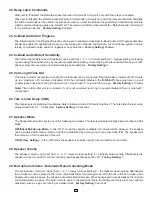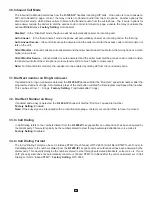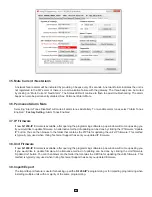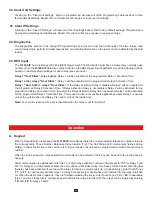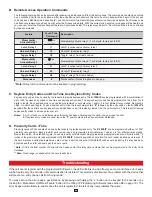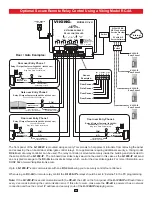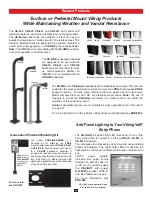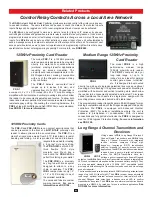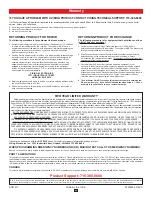
21
Feature
Touch Tone
Command
Description
Momentarily
Activate Relay 1
or
___ ___
Momentarily activate relay 1 (1 or 2 digits, factory set to
).
Latch Relay 1
11
Latch* (continuously activate) relay 1.
Un-Latch Relay 1
10
Un-latch* (deactivate) relay 1.
Toggle Relay 1
1#
Toggle* relay 1 from last position.
Momentarily
Activate Relay 2
Q
2 or
___ ___
Momentarily activate relay 2 (1 or 2 digits, factory set to
Q
2).
Latch Relay 2
21
Latch* (continuously activate) relay 2.
Un-Latch Relay 2
20
Un-latch* (deactivate) relay 2.
Toggle Relay 2
2#
Toggle* relay 2 from last position.
Disconnect
#
Disconnects or forces the phone to hang up.
* Note:
Relay latch commands must be enabled in programming.
Troubleshooting
C. Keyless Entry Codes and One Time Use Keyless Entry Codes
D. Proximity Cards / Fobs
Keyless entry codes may be used by the tenants to provide keyless entry. The
K-1200-IP
can be programmed with a combination of
up to 1000* keyless entry codes or one time use keyless entry codes. The keyless entry codes can be programmed to be from 1 to 6
digits in length. Each keyless entry code can be programmed to activate relay 1 and/or 2 in four different relay modes: Momentary,
Latch, Un-Latch and Toggle. To use a keyless entry code the tenant simply dials
“#”
followed by the entry code on the
K-1200-IP’s
keypad. After the one time use keyless entry code has been used, it is instantly cleared from the unit’s memory. This is ideal for issuing
keyless entry codes to service personnel, etc.
Notes: 1.
A short buzz sound indicates when the relay has been activated and the visitor can now open the door.
2.
If keyless entry codes are used, leave the “#” position blank in the Phone Number Database.
Proximity cards or Fobs can also be used by the tenants to provide keyless entry. The
K-1200-IP
can be programmed with up to 1000*
proximity card numbers. Each proximity card number can be programmed to activate relay 1 and/or 2 in four different relay modes:
Momentary, Latch, Un-Latch and Toggle. To use a proximity card the tenant simply presents a preprogrammed proximity card within **6
inches of the proximity card reader attached to the
K-1200-IP
. A short beep will be heard from the card reader indicating a card scan. If
the card matches a valid preprogrammed card number a short buzz sound
(if enabled)
will be heard indicating the relay has been
activated and the visitor can now open the door or gate.
B. Remote Access Operation Commands
The following commands can be entered after answering an inbound call from the entry phone. The commands can also be entered
on an outbound call to the entry phone. After the entry phone auto answers the call, one or two beeps will be heard. If the access
code has been disabled (two beeps heard), you can now enter the Remote Access Operation Commands below. If an Access code
has been programmed (one beep heard), enter the Access code digits. With the correct code entered, two beeps will be heard and
you can now enter the Remote Access Operation Commands below. The relay must be set to “Door Strike” Mode to be controlled
by these commands.
* Note:
1000 is the total number of Keyless Entry Codes and/or Proximity Card numbers that can be programmed in the Entry Code
Database.
** Note:
Read range is dependent on the card reader type.
If the unit cannot register with the programmed SIP server, the LED will blink on and off every second, and three error beeps
will be heard every 30 seconds until communication is restored. This alerts a potential user of a problem with the device that
will prevent an entry phone call from being made.
You may silence the error beeps, per instance, by pressing and holding the “
Q
” button on the keypad for 5 seconds or by
clicking the “Mute Alarm Until Next Failure” button in the Viking IP Programming Software (see section
35
on page 19). The
error beeps automatically re-enable once the unit is registered, to alert of any new problems that arise.











